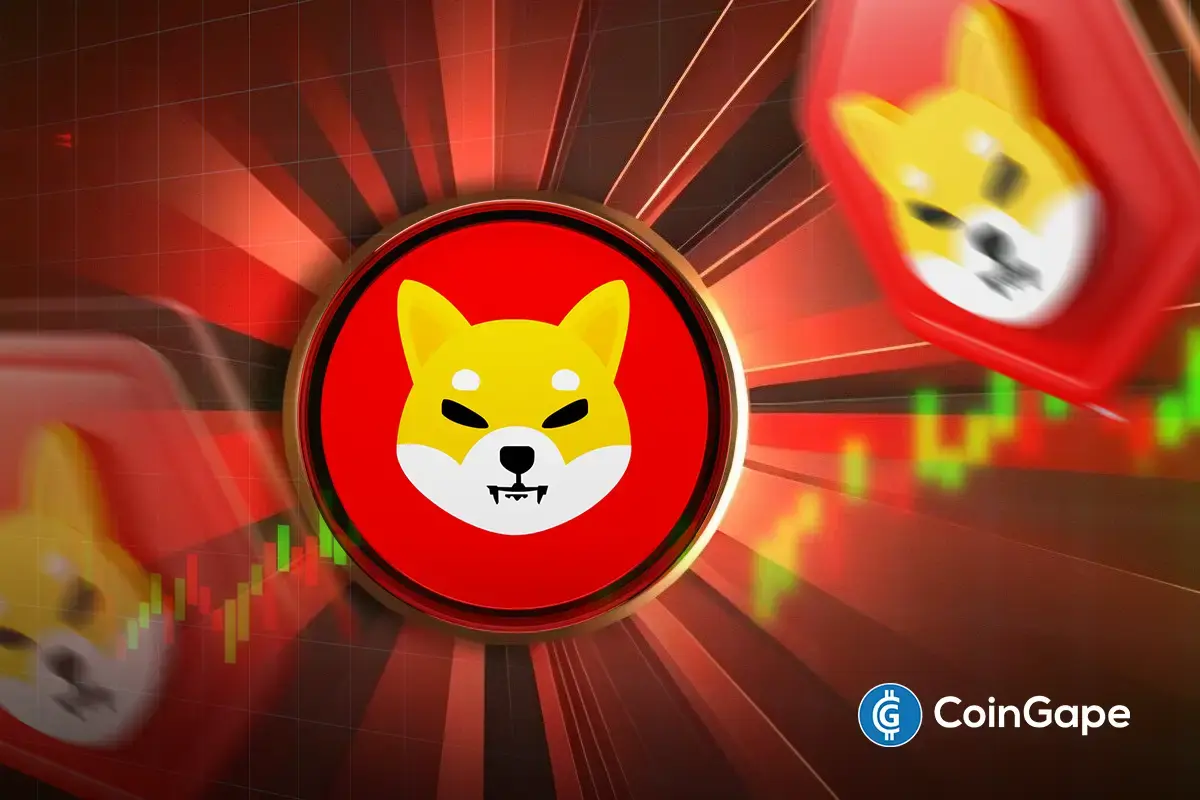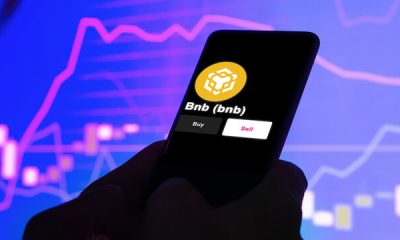Market
What’s Wrong With the Hamster Kombat Airdrop

On September 26, 2024, Hamster Kombat, a popular tap-to-earn Telegram game, launched the trading of its HMSTR token on several major exchanges. While the event was highly anticipated, the airdrop ended up disappointing a large portion of the crypto community.
Many believe it was “one of the worst airdrops in the history of the crypto.” Here are five reasons why the Hamster Kombat airdrop failed to meet expectations.
What’s Wrong With the Hamster Kombat Airdrop
1. Unfair Reward Distribution
Ahead of the airdrop, many participants were unexpectedly disqualified. Those who focused on boosting their points per hour (PPH) to accumulate tokens were banned just before the event. The developers implemented a new “anti-cheat” system, which caught many off guard.
According to those affected, the move seemed to benefit influencers, with a significant amount of the tokens redirected to them instead of regular players. This last-minute rule change caused major outrage.
2. Frequent Postponements and Sudden Rule Changes
Initially, the Hamster Kombat team had planned the airdrop for July 2024, but due to technical unpreparedness, the event was delayed. This postponement angered many who had been eagerly awaiting their rewards.
In late August, the team announced that the airdrop would finally occur in September. While they met this new deadline, they lost the trust of many community members.
Worse, just before the airdrop, the developers announced that participants would only receive 88.75% of their tokens. The remaining 11.25% wouldn’t be distributed until July 2025. This unexpected rule change led to a growing boycott movement within the community.
3. Low Listing Price of the HMSTR Token
One of the main concerns going into the airdrop was the value of the HMSTR token at launch. Unfortunately, these fears were realized when the token debuted at $0.01.
Almost immediately, the price began to decline. This sharp drop disappointed both long-term and short-term investors who had expected more from the project’s token.
“Where are those YouTubers and influencers who gave the community false hope of $0.10 or $0.50? Hamster Kombat has turned out to be the worst airdrop in crypto history. It’s almost 50%-60% down now,” one X user wrote.
Read more: 7 Best Exchanges To Buy and Sell Hamster Kombat (HMSTR) in 2024
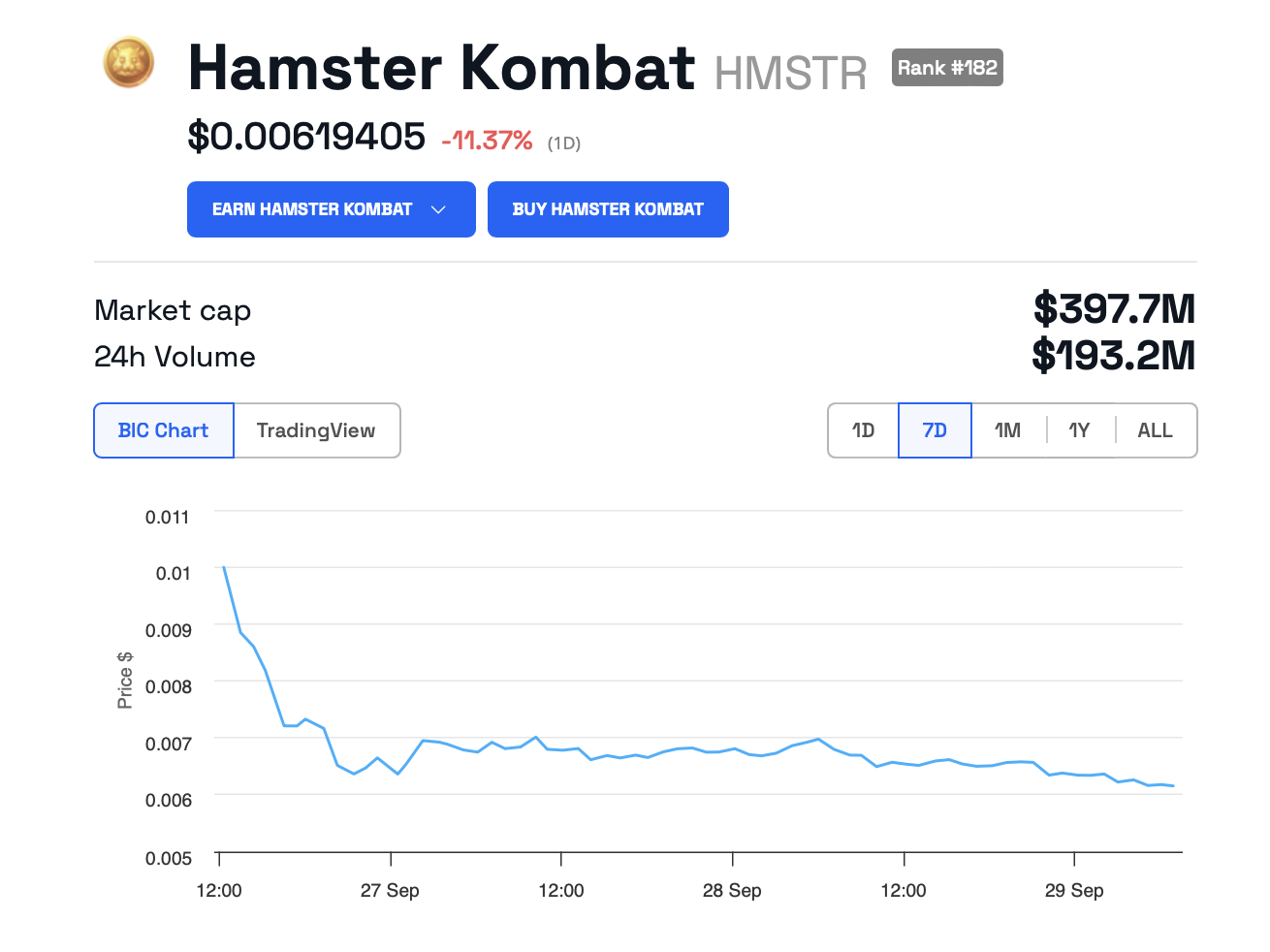
As of this writing, HMSTR is trading at $0.0019 — almost 40% lower than its initial value.
4. Problems with Selling HMSTR Tokens
Many project participants found themselves with only a few dollars’ worth of HMSTR tokens after months of interacting with the game. Players complained that despite the time spent on activities like tapping hamsters to earn rewards, the payouts were disappointingly low.
“Hamster Kombat has cheated the community. They have allocated a large portion of airdrops to YouTubers and influencers for referrals. They’ve implemented vesting without informing the community. They’ve made people work like labor, day and night to collect keys from their games and gave $5 or $10 tokens,” Crypto with Khan, a prominent crypto influencer commented.
Moreover, those with small token amounts faced additional challenges when trying to sell them. Some exchanges, like Binance, require a minimum transaction value of $5, making it impossible for users with smaller token balances to cash out their HMSTR.
5. Telegram Wallet Outages
The launch of HMSTR trading coincided with technical issues in the Telegram wallet, which is operated by TON blockchain. TON, built on the remnants of an abandoned Telegram crypto project, is responsible for running the crypto wallet within Telegram, where users hold HMSTR tokens.
Due to network overloads, many users found themselves unable to access or trade their tokens, further compounding frustrations around the airdrop.
Disclaimer
In adherence to the Trust Project guidelines, BeInCrypto is committed to unbiased, transparent reporting. This news article aims to provide accurate, timely information. However, readers are advised to verify facts independently and consult with a professional before making any decisions based on this content. Please note that our Terms and Conditions, Privacy Policy, and Disclaimers have been updated.
Market
Ethereum Holders Buy Heavily as Price Nears October 2023 Levels

Ethereum has experienced a challenging month and a half, with its price nearing a 17-month low at $1,802 at the time of writing. Despite this ongoing downtrend, which nearly sent ETH into a bear market, key investors have remained optimistic.
As Ethereum approaches these significant levels, many market participants believe that a price rebound could be on the horizon.
Ethereum Investors Capitalize On Low Prices
Ethereum’s supply on exchanges has dropped to a six-month low, indicating that investors are increasingly holding their assets off the market. This drop in exchange supply is often seen as a bullish sign because it suggests that long-term holders (LTHs) are accumulating more ETH at these low price levels, anticipating future price appreciation.
These investors are not willing to sell, demonstrating strong conviction in Ethereum’s long-term value. The decrease in exchange balances also indicates less short-term trading activity. This suggests that many investors are waiting for the price to rebound before making any moves.
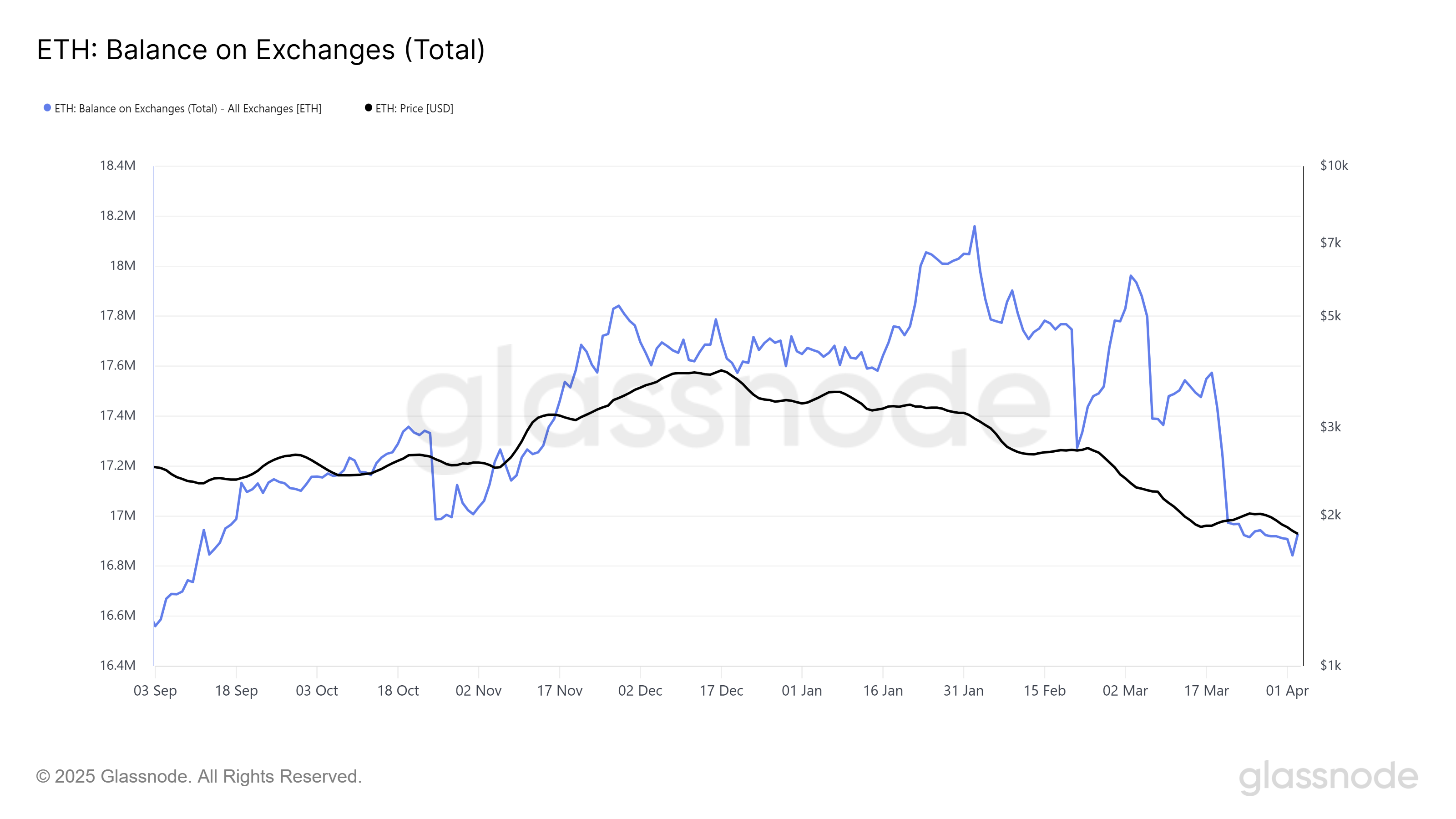
Over the past month, Ethereum’s Liveliness indicator has declined, signaling that the selling pressure is weakening. Liveliness measures the activity of long-term holders, and a decline generally points to accumulation rather than selling.
This drop reflects the growing sentiment among Ethereum’s long-term investors, who are increasing their holdings and expecting the price to recover in the future. The decline in Liveliness suggests that many are confident in Ethereum’s fundamentals and are less concerned about short-term fluctuations.
This accumulation phase suggests that Ethereum’s market sentiment may be shifting. The confidence of LTHs—who hold significant influence over the asset’s price—could lead to a strong upward momentum once the market conditions improve.
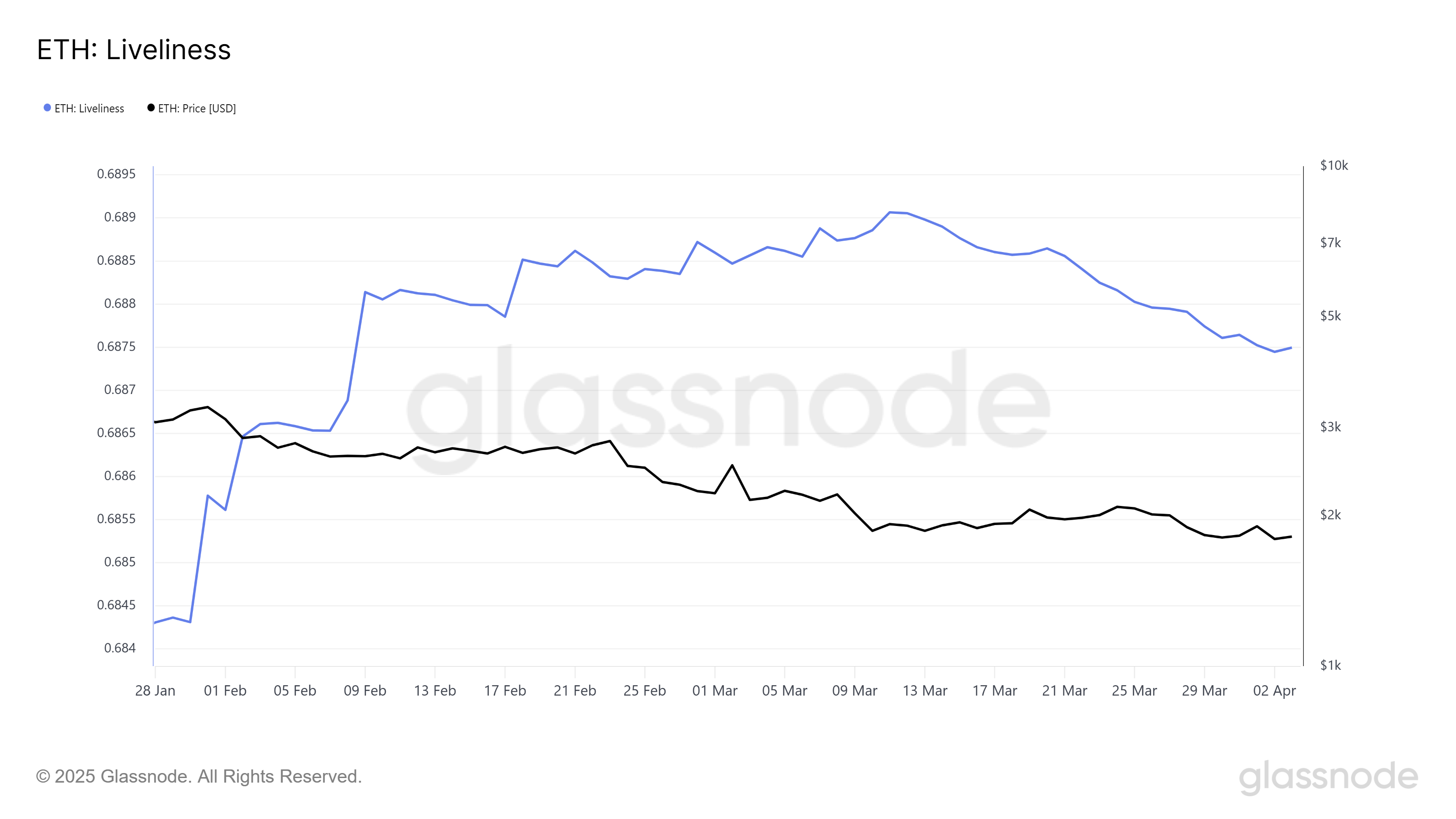
ETH Price Needs A Nudge
Ethereum is currently trading at $1,802, just below the resistance level of $1,862. The price has been stuck under this barrier for six weeks, continuing the downtrend that has defined much of the recent price action. However, if Ethereum can break above $1,862, it could signal the end of the downtrend and the start of a price recovery.
Given the current market sentiment and accumulation by key holders, it is possible that Ethereum will continue to gain upward momentum. If Ethereum successfully breaks through the $1,862 resistance, it could move toward the $2,000 mark, regaining some of the losses from the previous weeks.

On the other hand, should the bearish sentiment intensify, Ethereum’s price may dip further toward its 17-month low of $1,745. Failure to secure support at this level could lead to even greater losses. This could extend the recent downtrend and leave many investors exposed to a prolonged bearish market.
Disclaimer
In line with the Trust Project guidelines, this price analysis article is for informational purposes only and should not be considered financial or investment advice. BeInCrypto is committed to accurate, unbiased reporting, but market conditions are subject to change without notice. Always conduct your own research and consult with a professional before making any financial decisions. Please note that our Terms and Conditions, Privacy Policy, and Disclaimers have been updated.
Market
PENDLE Token Outperforms BTC and ETH with a 10% Rally

PENDLE has surged by 10% in the past 24 hours, making it the market’s top gainer during this period. The altcoin has even outperformed major cryptocurrencies like Bitcoin (BTC) and Ethereum (ETH).
With buying activity still underway, the PENDLE token is poised to extend its uptrend in the short term.
PENDLE Soars 43% After March Lows
PENDLE cratered to a seven-month low of $1.81 on March 11. As sellers got exhausted, the token’s buyers regained dominance and drove a rally. Trading at $3.24 at press time, PENDLE’s value has since climbed 43%.
The double-digit surge in the altcoin’s price has pushed it above the Leading Spans A and B of its Ichimoku Cloud indicator. They now form dynamic support levels below PENDLE’s price at $2.73 and $2.80, respectively.
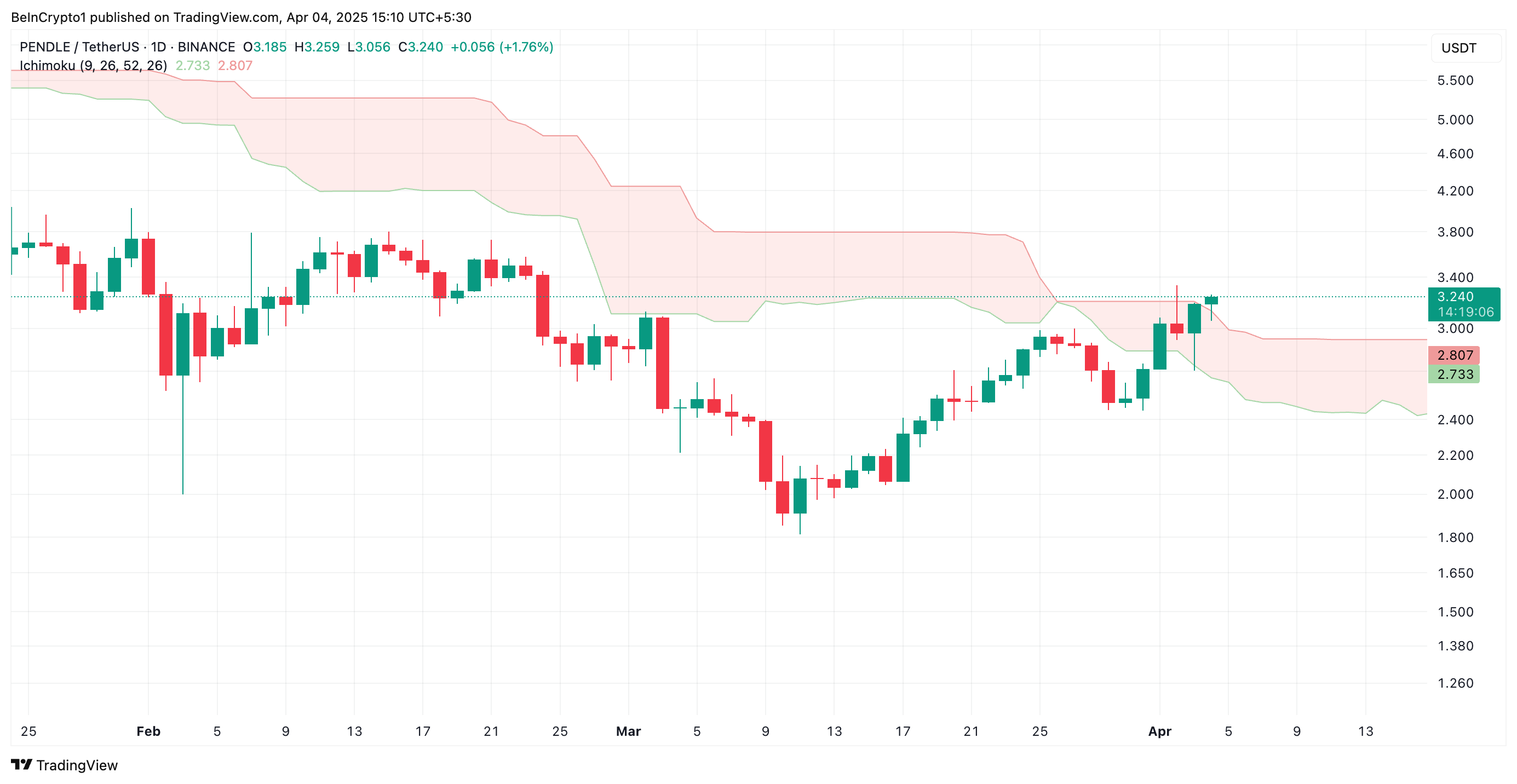
The Ichimoku Cloud tracks the momentum of an asset’s market trends and identifies potential support/resistance levels. When an asset trades above the leading spans A and B of this indicator, its price is in a strong bullish trend. The area above the Cloud is considered a “bullish zone,” indicating that market sentiment is positive, with PENDLE buyers in control.
This pattern suggests that the token’s price could continue to rise, with the Cloud acting as a support level if prices pull back.
In addition, PENDLE currently trades above its Super Trend indicator, confirming the likelihood of extended gains.
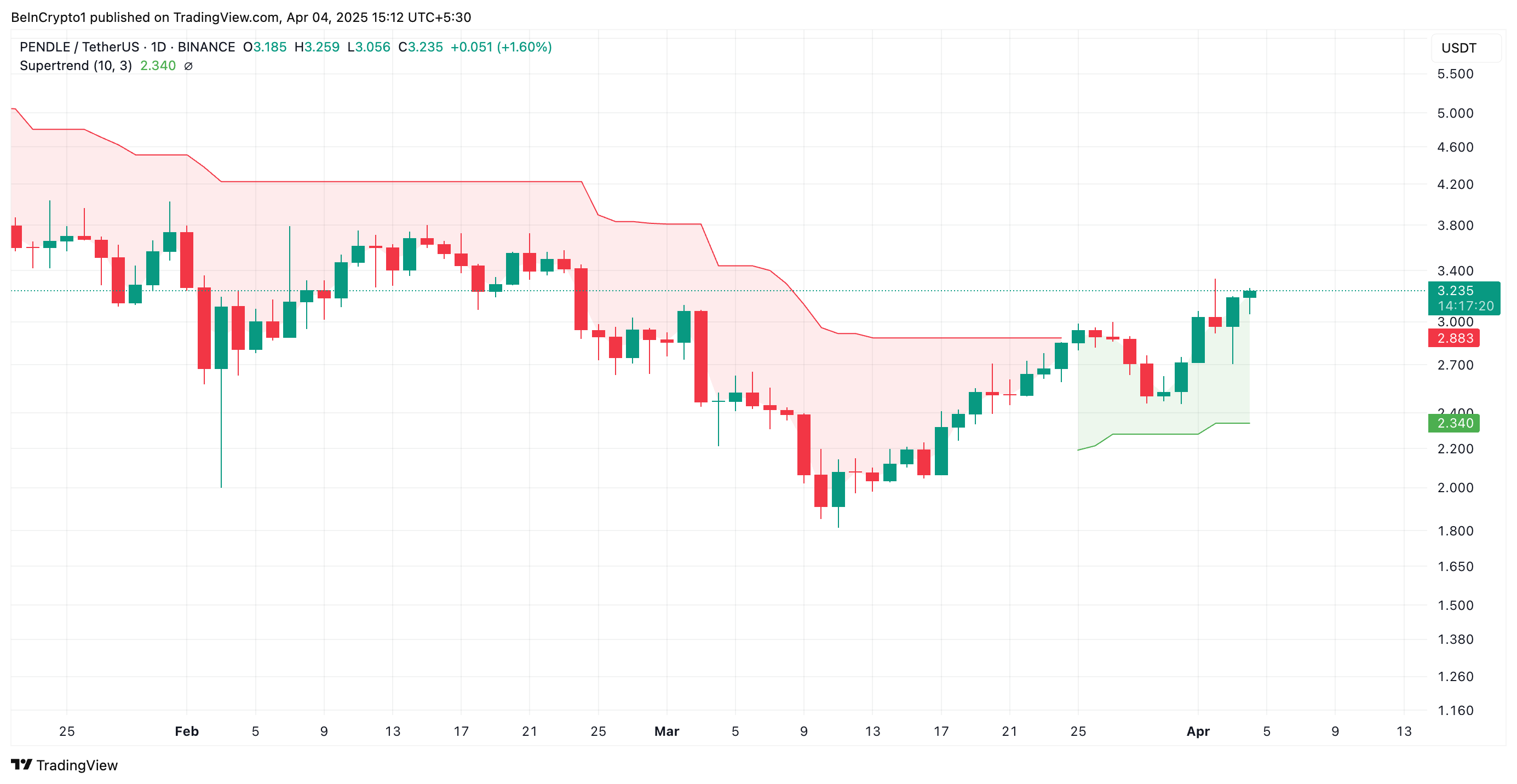
The Super Trend indicator tracks the direction and strength of an asset’s price trend. It is displayed as a line on the price chart, changing color to signify the trend: green for an uptrend and red for a downtrend.
If an asset’s price is above this line, it signals bullish momentum in the market. In this scenario, this line represents a support level that will prevent the price from any significant dips. For PENDLE, this is formed at $2.34.
PENDLE Holds Above Key Trendline
Since its rally began on March 11, PENDLE has traded above an ascending trendline. This pattern forms when a series of higher lows connect, indicating that the price of an asset is consistently rising over time.
It represents a bullish trend, showing that PENDLE demand exceeds supply, with buyers pushing prices higher.
This trendline acts as a support level. With the token’s price bouncing off the trendline, it signals that the asset is in an uptrend and likely to continue. In this scenario, PENDLE could rally to $3.60.
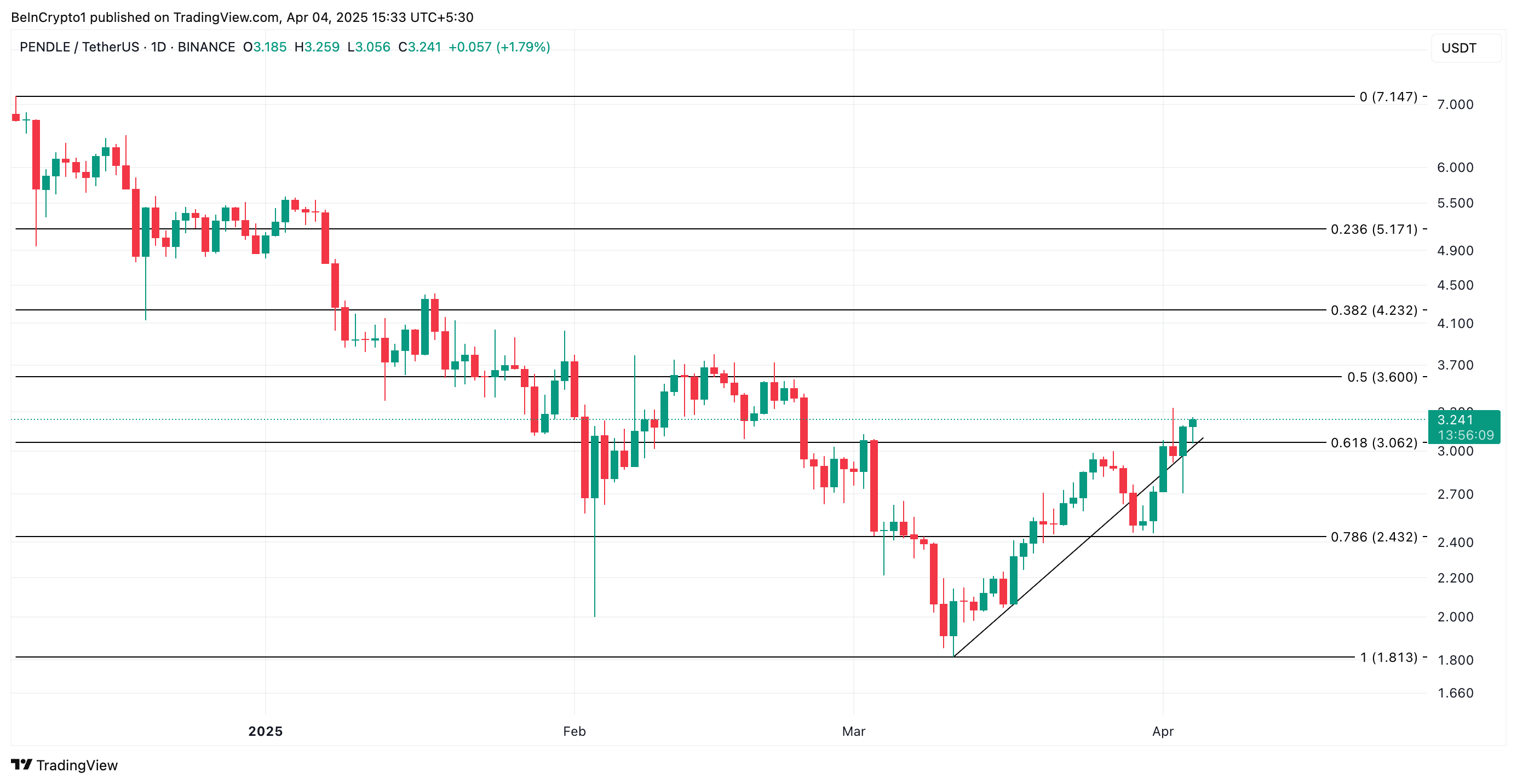
However, if selloffs commence, the PENDLE token could lose some of its recent gains and fall to $3.06.
Disclaimer
In line with the Trust Project guidelines, this price analysis article is for informational purposes only and should not be considered financial or investment advice. BeInCrypto is committed to accurate, unbiased reporting, but market conditions are subject to change without notice. Always conduct your own research and consult with a professional before making any financial decisions. Please note that our Terms and Conditions, Privacy Policy, and Disclaimers have been updated.
Market
Will the SEC Approve Grayscale’s Solana ETF?

Grayscale has submitted a registration statement with the SEC to convert its Grayscale Solana Trust (GSOL) into an ETF listed on NYSE Arca.
Despite the filing, prediction markets remain unconvinced about the chances of approval.
Is a Solana ETF Approval Still Unlikely for Q2?
On Polymarket, odds for a Solana ETF approval in the second quarter of 2025 stand at just 23%. Broader expectations for any 2025 approval are at 83%, down from 92% earlier this year.
The decline reflects regulatory delays. In March, the SEC extended review timelines for several ETF applications tied to Solana, XRP, and other altcoins.

This pattern suggests the agency may be holding off on decisions until a permanent chair takes over. Mark Uyeda, currently serving as interim chair, has not signaled a shift in stance.
Paul Atkins, Trump’s nominee to lead the agency, appeared before the Senate last week. Lawmakers questioned his involvement in crypto-related businesses, adding further uncertainty around future approvals.
Grayscale’s latest filing excludes staking, which could speed up the review process. The SEC has previously objected to staking features in ETF proposals.
When spot Ethereum ETFs moved forward last year, Grayscale, Fidelity, and Ark Invest/21Shares all removed staking components to align with the SEC’s expectations at the time.
Under Gary Gensler’s leadership, the SEC expressed concern that proof-of-stake protocols could fall under securities law. Asset managers adjusted their applications accordingly to move forward.
Following approvals for spot Bitcoin and Ethereum ETFs, several firms aim to expand their offerings to include other cryptocurrencies. They plan to offer access through traditional brokerage accounts without requiring direct asset custody.
Solana remains a strong contender due to its growing futures market in the US and a more favorable regulatory environment. Analysts view it as one of the next likely approvals if the SEC opens the door to more altcoin ETFs.
Disclaimer
In adherence to the Trust Project guidelines, BeInCrypto is committed to unbiased, transparent reporting. This news article aims to provide accurate, timely information. However, readers are advised to verify facts independently and consult with a professional before making any decisions based on this content. Please note that our Terms and Conditions, Privacy Policy, and Disclaimers have been updated.
-

 Market23 hours ago
Market23 hours agoWormhole (W) Jumps 10%—But Is a Pullback Coming?
-

 Altcoin22 hours ago
Altcoin22 hours agoAltcoin Season Still In Sight Even As Ethereum Struggles To Gain Upward Momentum
-

 Market24 hours ago
Market24 hours agoRipple Shifts $1B in XRP Amid Growing Bearish Pressure
-

 Market22 hours ago
Market22 hours agoBinance’s CZ is Helping Kyrgyzstan Become A Crypto Hub
-

 Ethereum17 hours ago
Ethereum17 hours agoEthereum Faces ‘Hyperinflation Hellscape’—Analyst Reveals Key On-Chain Insights
-

 Market16 hours ago
Market16 hours agoWhat to Expect After March’s Struggles
-

 Altcoin21 hours ago
Altcoin21 hours agoHere’s Why Is Shiba Inu Price Crashing Daily?
-
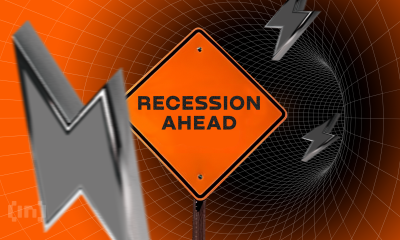
 Market21 hours ago
Market21 hours agoCrypto Market Mirrors Nasdaq and S&P 500 Amid Recession Fears


